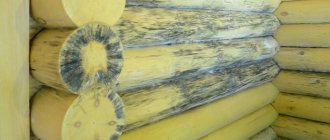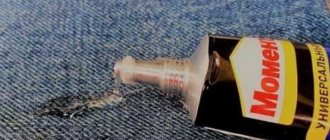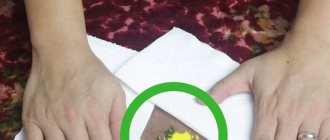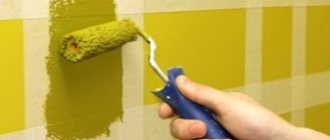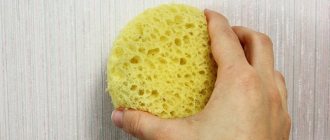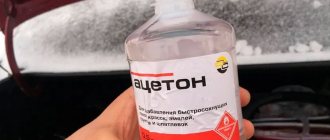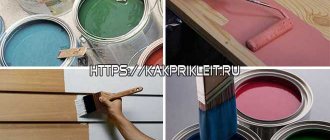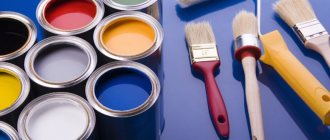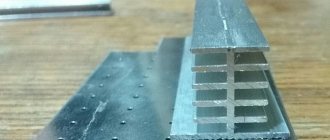When carrying out any restoration work, the first thing you need to do is remove the old paint from the metal. It is produced to ensure a more uniform application of new layers of paint and varnish composition, for better contact of the applied coating with the surface being treated. Mechanical fashion is becoming an increasingly popular design direction, hence the increased interest in how to remove paint from products.
To understand how to remove old paint from metal, you need to know all the known methods that currently exist.
General recommendations
When choosing a product to remove old paint from metal, you should be guided by the following principles:
- When using professional compounds, you should exclude those intended for other surfaces.
- If the type of paint is not known, you should use a universal product. But the best effect is achieved by using specialized solutions.
- It is important to exclude toxic substances that can harm health and damage the surface.
- Mixing different drugs is unacceptable.
- When removing old paint laid in several layers, the procedure will have to be repeated more than once.
- When using chemicals, you should take care of protective equipment and ventilation of the room.
- Gel formulations are more effective than liquid formulations because they contain more active ingredients.
If the product used to remove old paint from metal contains paraffin, the surface must be degreased before applying a new layer. Otherwise, sufficient adhesion will not be achieved.
Cleaning depending on the surface
Most often, items that need cleaning are those that are regularly used in everyday life - bicycle frames, metal gates, bathroom bowls, drainpipes, heating radiators, etc.
When you need to clean a bicycle frame, due to its fragility, you definitely cannot use a mechanical method, since there is a high probability of damage. Chemical compounds are best suited. They will carefully clean the frame before applying a new coat.
Before removing paint from radiators and pipes, you must remove from the room all objects that can absorb the vapors generated during the treatment process.
Due to the complexity of the terrain, the best cleaning method is chemical. It is convenient to use the remover in aerosol form, which is easy to spray in hard-to-reach places, including inside the battery.
Overview of common techniques
For the procedure, the choice is between mechanical, thermal and chemical methods. Their feasibility is determined based on:
- from surface properties;
- from the type of dye;
- their layer thicknesses;
- from adhesive characteristics;
- from the available set of tools;
- from financial possibilities.
When deciding how to remove old paint from metal, you need to consider the strengths and weaknesses of the methods described below.
Selecting a cleaning type
When starting to remove paint, you need to choose the most suitable method of work. In order to make a decision, the following circumstances must be taken into account:
- It is necessary to take into account what material the surface being cleaned is made of. If it is durable, then the choice will be wider.
- It is necessary to take into account the characteristics of the paint or varnish that needs to be removed.
- Some surfaces are covered with only one coat, but it also happens that two, three or more layers of paint are applied.
- The adhesive properties of different types of coatings can vary greatly. For example paints. Those made on acrylic have high adhesion, which makes the cleaning procedure much more difficult.
When choosing, it is also necessary to take into account the available opportunities: tools and financial capabilities for purchasing.
Removing paint with a spatula Source vsyakraska.ru
Mechanical
This method involves applying sandpaper, a spatula, a sharp knife or a power tool to the paint. This is followed by sanding and washing off the debris with water. Saving money is the only advantage of the option. At the same time, the process is connected:
- with great time and effort costs;
- with the risk of deforming the surface;
- health hazards associated with dust generation.
In addition, modern compositions are characterized by high adhesion, and they can be removed mechanically only after treatment with solvents.
Thermal
Removing old paint from metal using temperature is effective for old coatings applied in several layers. Heating reduces adhesion, so the composition can be easily removed by hand. It is important to take into account that:
- heating paint indoors will result in poisoning with hazardous substances;
- working near flammable substances will result in a fire;
- soft metals, including brass or cast iron, will warp when heated.
Given the high danger of the method, it is rarely used.
Chemical
This method consists of using professional or folk remedies to remove old paint from metal. Based on their direction, mixtures are distinguished that eliminate:
- oil;
- powder paint;
- dyes from ferrous or non-ferrous metals.
Universal formulations are sold separately. Chemicals for dissolution are available for purchase in the store, or you can prepare it yourself.
Note!
Chipboard: what is it? Types, application features, photos, sizes, thickness, explanation, manufacturers
DIY houses made from shipping containers step by step: instructions, diagrams, pros and cons, photos, design
Working pressure in the heating system in a private house: what it should be, how to create it, instructions for adjusting it yourself
The work is organized in stages. First, the treated area is cleaned of contaminants. Then the prepared product is applied to the surface and covered with plastic wrap. Then wait until the layer separates from the base. This is evidenced by characteristic bubbles on the coating.
Finally, all that remains is to remove the remaining dye mechanically. The surface is sanded with sandpaper and then washed with acetone or another solvent. A new layer is applied after drying.
Preparatory stage
Before you begin work, you should be properly prepared. The complex of preparatory work will include the following:
- Buy the necessary tools for the procedure, as well as household chemicals. Depending on the cleaning method you choose, you may need a hair dryer, a sanding machine, paint remover, kerosene, a spatula, a brush, etc.
- Protect all objects that are located near the cleaning site from dust and other types of contaminants. To do this, use polyethylene film.
- Prepare personal protective equipment in advance, and if we talk about the classic set, it includes construction glasses (safety glasses), gloves, and a respirator.
- Prepare the metal surface for future cleaning, namely, you need to remove dust and other contaminants from it, and if you use household chemicals, you can clean the paint with a brush equipped with stiff bristles. This will increase the diffusion of the solvent and also speed up the reaction.
After all stages are completed, the work can begin.
Advantages and disadvantages of the chemical method
This method is attractive due to its simplicity of execution. It does not require physical effort to achieve results. But it requires patience, especially when working with slow-acting agents. And the range of products allows you to choose an effective composition for any type of paint.
Among the disadvantages of the method is the need to spend money on products from the store. Or time to prepare folk remedies. In addition, the chemical components are toxic. Therefore, working with them is associated with health risks. Especially in closed spaces. Therefore, when chemically cleaning metal, it is necessary to observe all safety measures and not neglect gloves and respirators.
Useful tips
It is recommended to adhere to the following rules:
- The wash must be suitable for its intended purpose. If the composition is intended for metal, using it on a wooden surface is not only ineffective, but also destructive to the material.
- Universal compositions are capable of removing all types of paint and varnish coatings, but their effectiveness is lower than that of specialized products aimed at specific types.
- It is hardly worth giving preference to overly active solutions. They are toxic and can sometimes damage the surface. Modern washes from well-known manufacturers have a milder effect, but at the same time they release fewer toxins.
- It is not recommended to mix different drugs with each other, as the consequences of this are unpredictable.
- The coating does not always peel off after the first treatment. If the material is covered in several layers, it will need to be processed several times.
- When working with chemicals, it is necessary to ensure good air circulation in the room - this will help remove toxins.
- If you have a choice, it is recommended to give preference to gel pastes. They are more expensive than liquids, however, due to the higher concentration of active components, their effectiveness is higher. In addition, it is more convenient to treat vertical surfaces with pastes, since the gel has low fluidity.
- If the remover contains paraffin (it acts as an evaporation inhibitor), the surface must be degreased. If this is not done, the proper level of adhesion will not arise between the new layer and the base.
The process of washing off paint at home does not require high qualifications and can be carried out by anyone. However, even such simple work is best carried out in strict accordance with the instructions while observing safety precautions.
By professional means
Among the recommended means for removing old oil paint from metal is called “Constant”. The gray-white composition contains organic solvents, disintegrants and thickeners. According to technical information:
- consumption is 150-170 per square meter, when removing one layer of paint;
- the content of non-volatile components can reach 10%;
- evaporation reaches 6% at a temperature of 20 degrees Celsius;
- It may take 20 minutes to wash off one layer;
- If the solvent remains on the surface longer, there is a risk of corrosion.
The composition is sold ready for use. However, its expiration date remains valid if the product is in a sealed package and is not exposed to direct sunlight or within the range of heating devices. Neomid and Dufa Abbeiser are considered analogues of “Constant”.
Folk remedies
The oil coating can also be removed:
- A mixture of turpentine and ammonia in a ratio of 2:1. It will take about an hour for the paint to dissolve.
- A solution of quicklime and potash (70/30). The composition is diluted with water until a viscous consistency is formed. It will take 12 hours for the paint to dissolve.
- A mixture of chalk and lime paste in a 1:1 ratio. The composition is supplemented with 20% caustic soda, which gives it a paste-like appearance. The resulting product is applied to the paint in a layer of 2 millimeters. When using this method, mechanical cleaning can begin after an hour or an hour and a half.
Therefore, you can prepare effective remedies yourself. The choice is influenced by the availability of the necessary components, as well as the urgency of the work.
What is the best way to paint a rusty gate?
The best option for painting rusty gates
There will be special three-component primer-enamels intended for external and internal work. This is the so-called “3 in 1 paint”. It removes rust and protects against its further formation, serving as both a primer and paint.
Interesting materials:
How do you know if a person has unfollowed you on Instagram? How do you know if a person is on Instagram? How to find out if a person is on the federal wanted list? How to find out what is on a person? How to find out what belongs to a person? How to find out what is registered on a person? How to find out a person's email? How to find out a person's email? How do you know if a person has a car? How to find out if a person has debts?
How to remove water-based paint
This type of coating has less adhesion compared to oil-based counterparts. Therefore, it can be removed with simpler solvents. For example, water-based emulsion can be cleaned mechanically using water. To do this, you will need to leave scratches with a wire brush and treat the surface with warm water. After waiting for the paint to swell, remove it with a scraper.
Note!
Three-way valve in a heating system: instructions on how to choose and install correctly in a private home
How to seal a stove so it doesn’t crack from the heat, what solution: review of the most effective methods + instructions
Why the bottom of the battery is cold and the top is hot - let's look at the reasons. Review of recommendations on what to do and how to fix it
An alternative would be to use wallpaper paste. The composition is applied to paper, which is applied with the sticky side to the paint. When the glue dries, all that remains is to remove the paper coating with a spatula.
Universal means
These products will be the optimal solution to the problem of removing old paint from metal if its type is unknown. Here you can use:
- An iodine solution, which is obtained at the rate of 200 ml per 10 liters of water. After good stirring, the surface is treated with the product. Cracks that appear will indicate that it is time to begin mechanical cleaning.
- A soap solution prepared from grated laundry soap and water.
- A solution of ammonia. 250 ml of the component is mixed with two kilograms of chalk and a liter of water. The result is a mush-like mixture that will cause the paint to peel off.
For latex coatings, it is recommended to use a solution with dichloroethane or chloroform. To dissolve acrylic dyes, it is recommended to enrich the composition with alcohol, vodka or salicylic acid.
Sandblasting unit
In industry, sandblasting and shot blasting machines are used for these purposes. Such a device creates a powerful water or air jet that carries abrasive particles. The “caliber” of mechanical particles depends on what product needs to be cleaned. In a matter of minutes, the installation will remove paintwork from even complex surfaces.
There is no point in buying such a device for home use. But you can contact the company and order the service - both simply and inexpensively.

